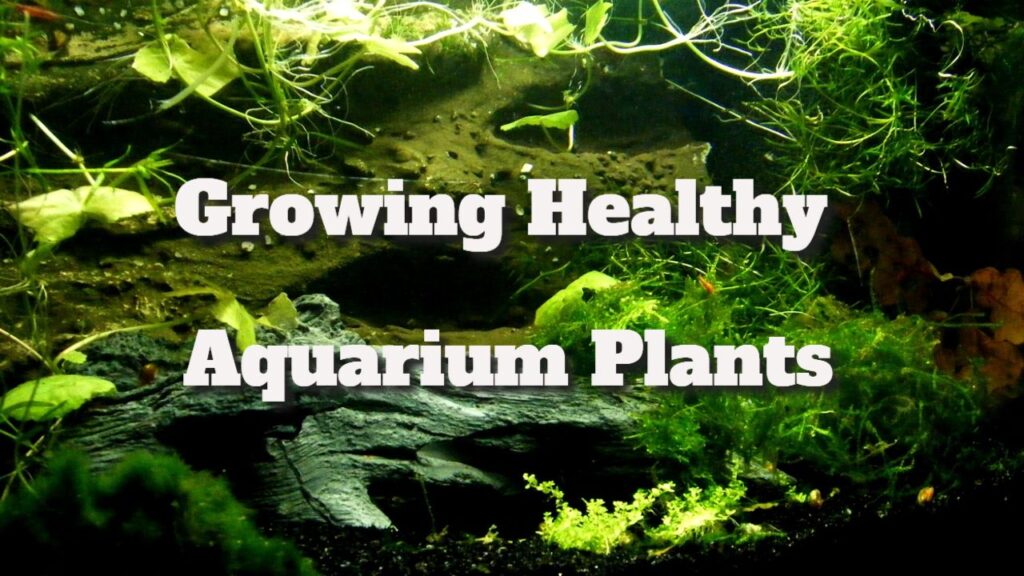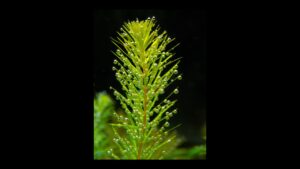Growing Healthy Aquarium Plants
Keeping a lovely aquarium at home entails far more than just fishkeeping. Healthy aquatic plants are essential to a visually beautiful and balanced aquarium.
They not only bring colour and vitality to the aquarium, but they also help to maintain the environment. A well-planted aquarium gives your fish a lush environment replicating their natural habitat.
However, caring for aquarium plants involves devotion, knowledge, and consistency.
Our tutorial will help you understand how to keep your aquarium plants healthy.
Selecting the Right Plants
Only some aquatic plants you like will be suitable for your aquarium.
When selecting plants, consider light circumstances, temperature requirements, water parameters, growth rates, and fish in your aquarium.
As a result, performing appropriate study or seeking professional guidance to ensure your chosen plants will live and grow in your unique conditions is critical. Anubias, Amazon Sword, Java Moss, and Vallisneria are popular aquarium plants that require little maintenance.
Correct Planting Methods
Knowing how to grow aquatic vegetation correctly is critical to their survival. Typically, it would help if you gently press the roots into the substrate, taking care not to damage them.
Also, leave the crown slightly above the substrate, which connects the stem and roots. Some species, such as Anubias and Java Fern, should be connected to driftwood or rocks rather than buried.
Lighting requirements.
Photosynthesis, the process by which plants make food, requires adequate lighting.
Aquarium plants require specialised underwater lighting that mimics the spectrum of natural sunshine. Low-light plants, such as Anubias and Java Fern, require approximately 0.25 watts of light per litre, but high-light plants, like Dwarf Baby Tears, require 1 watt per litre.
Furthermore, limiting the length of time exposed to light is crucial. A maximum of 10-12 hours of light exposure per day is recommended.
Water parameters.
To keep your plants healthy, the pH, temperature, and hardness of the water in your aquarium must be consistent and within acceptable limits. Plants require slightly acidic to neutral pH values (6.5-7.5). However, it varies, so understanding your plants’ needs is critical.
Proper Nutrition
Aquatic plants, like terrestrial plants, require nutrients for proper growth and development. Nitrogen, phosphorus, potassium, iron, and manganese are essential nutrients.
While fish waste and leftover food can provide some of these minerals, most planted aquariums require professional plant fertiliser to achieve a complete nutrient solution.
Substrate Quality.
The substrate, or the material at the bottom of your aquarium, has a purpose beyond decoration. It serves as a rooting substrate for the plants and promotes nutrient delivery. Sand, gravel, and professionally manufactured planted tank substrates rich in minerals required for plant life are all examples of high-quality substrates.
Proper Pruning
Pruning, or eliminating overgrown or unhealthy sections of a plant, is an essential activity for promoting healthy and controlled growth. However, you must understand the appropriate technique to avoid injuring your plants.
Never lift plants by their stems because this might damage the roots and strain the plant. To ensure a clean cut, use sharp, sterilised aquatic scissors.
CO2 Systems
Most aquariums, particularly those with many plants or that proliferate will benefit from more CO2. Several CO2 injection systems on the market can help provide this essential component for photosynthesis.
Dealing with Algae
Algae growth is a typical problem in planted aquariums. Although some algae might be helpful, excessive development can harm plants by blocking light and nutrients.
Algae can be managed in various ways, including light and nutrients, using algae-eating organisms, and even applying algaecide chemicals when needed.
Routine maintenance.
Maintaining a clean aquarium is essential for plant health. This includes cleaning your tank regularly, analysing water parameters, changing water frequently, and monitoring the health of your fish and plants.
Aquarium plants need more than just water to grow. Their health, development, and vibrancy depend on correct care and maintenance.
A magnificent aquatic environment can be achieved by carefully balancing lighting, water parameters, fertilisers, and pruning. A well-kept, healthy, plant-filled aquarium is aesthetically pleasing and valuable to any home.
Anyone with the correct knowledge and effort may successfully manage a healthy aquatic paradise.
Remember, a lush green planted tank does not appear overnight. Patience is your buddy in this endeavour. Each plant species has unique requirements, growth rates, and care needs.
1. Use Appropriate Lighting: Different aquarium plants require varying light levels. Some plants require high-intensity light to thrive, whilst others require low-intensity light. Make sure you understand the lighting requirements for your specific plant.
2. Check Water Parameters: The pH, temperature, hardness, and alkalinity of the water are all critical for the health of your aquarium plants. Try to keep the pH between 6.5 and 7.5.
3. Regular Cleaning: Thoroughly clean the aquarium and remove any decaying plant materials. Excessive rotting plants can degrade water quality, affecting both fish and plants.
4. Nutrient Supply: Ensure the aquarium plants receive essential nutrients such as iron, potassium, and carbon dioxide. If the plant does not get these nutrients from the water or the fish, add fertilisers specifically developed for aquarium plants.
5. Pruning: Like any other plant, Aquarium plants require regular pruning to maintain their health. Pruning not only keeps the plant healthy but also promotes growth.
6. Install a Good Quality Filter: A good filter circulates water and balances your aquarium’s ecology.
7. Adequate Space: Ensure your aquarium plants have enough room to thrive. If they are overcrowded, they may need more light or nutrients.
8. Select the Right Substrate: Choosing a suitable substrate is critical for your plants’ growth. A nutrient-rich substrate allows root-feeding plants to absorb critical nutrients straight from their roots.
9. Carbon Dioxide Supply: Plants require carbon dioxide to perform photosynthesis. If your tank is extensively planted, consider installing a CO2 system.
10. Proper Planting: Some plants are supposed to be rooted in the substrate, while others should be attached to decorations. Make sure to investigate how your unique plant likes to be planted.
Remember that caring for your aquarium plants entails growing them and maintaining their overall health, resulting in a more vivid and energetic aquarium.
The post Growing Healthy Aquarium Plants appeared first on Unity Pets.
The Article Growing Healthy Aquarium Plants was found on https://limitsofstrategy.com







Comments are closed